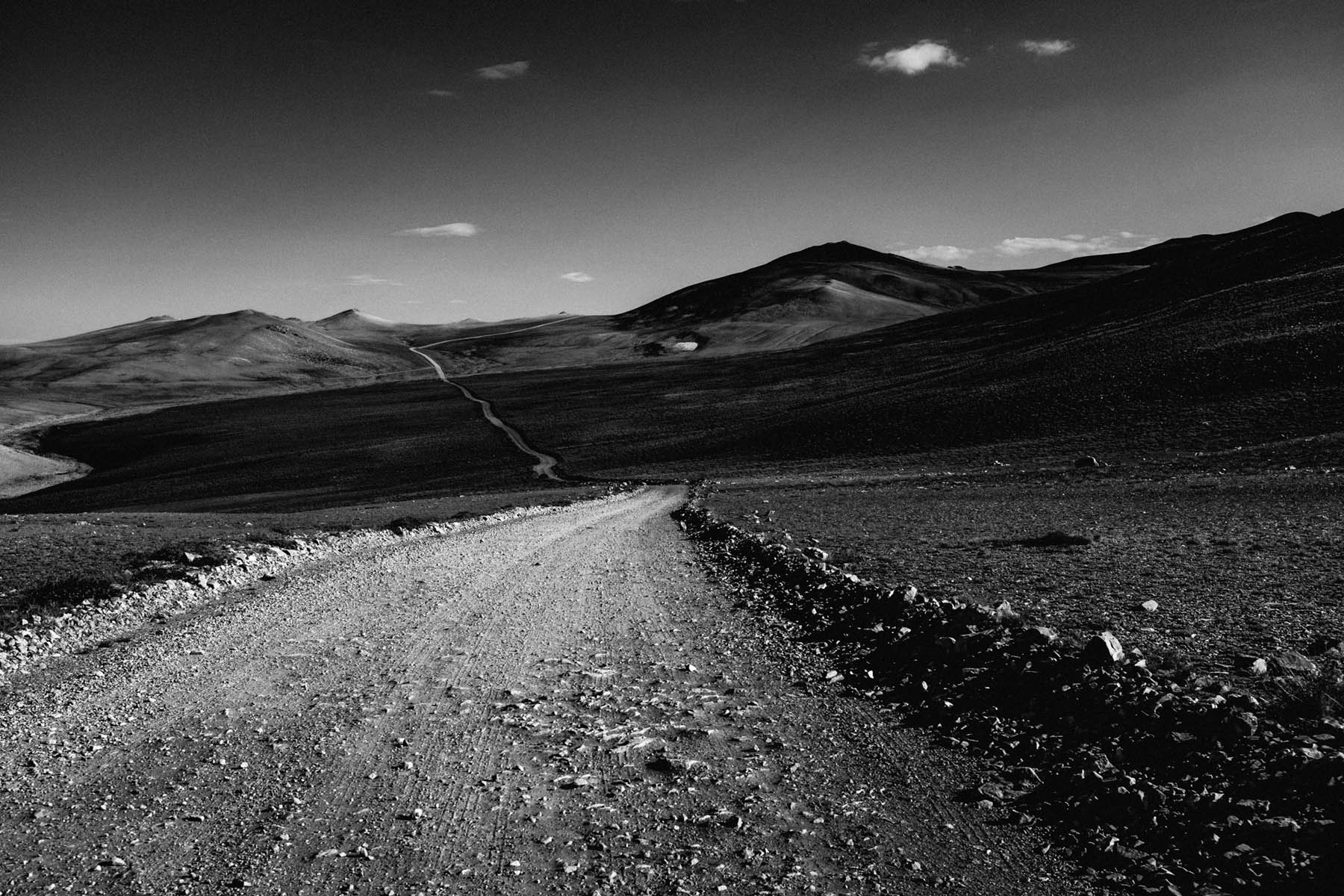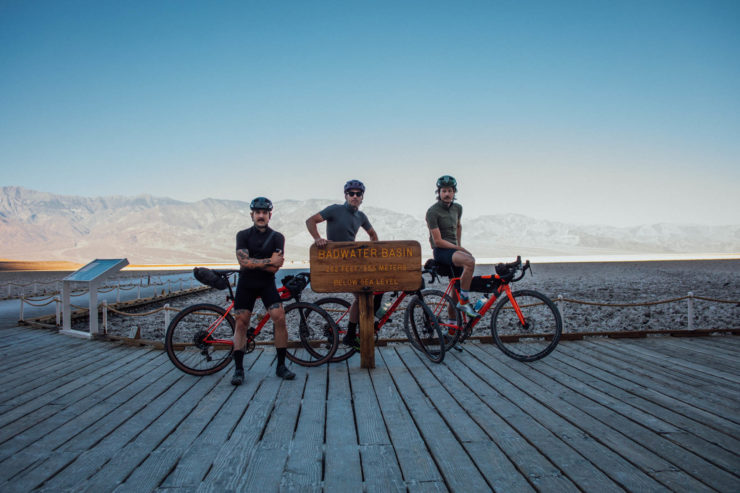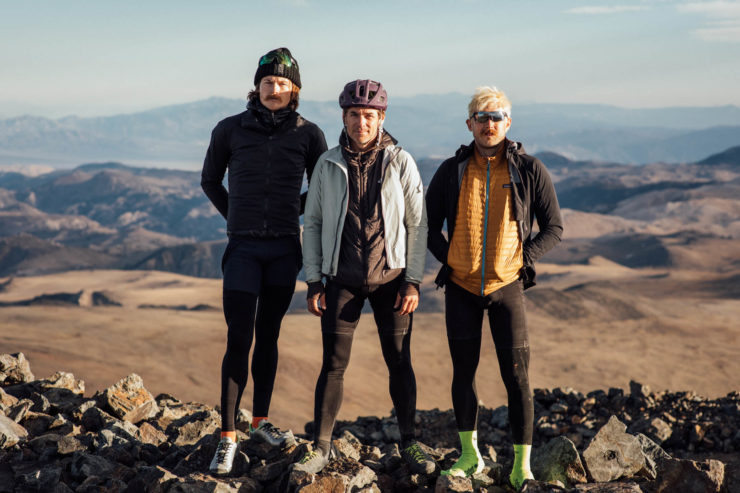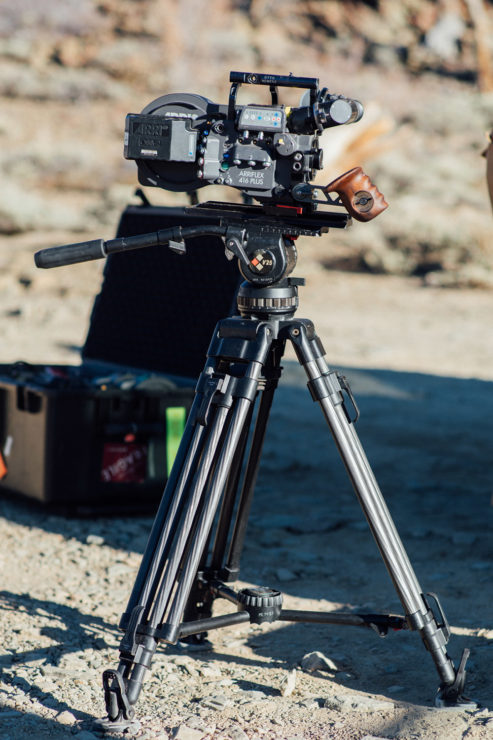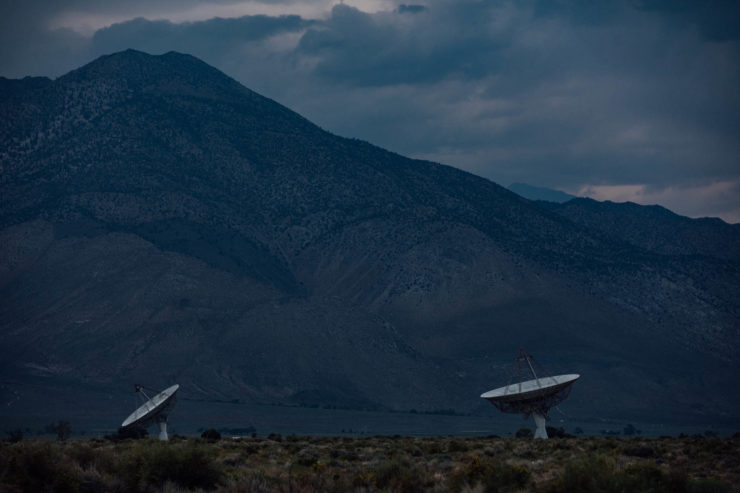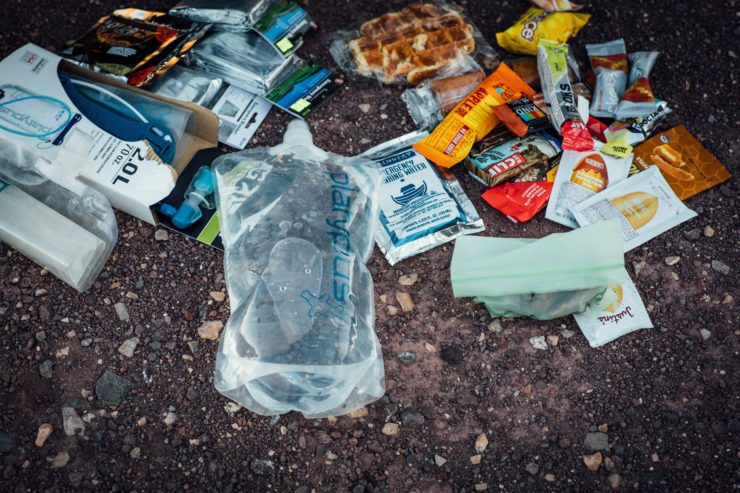Hi Lo Cali
Share This
Badwater Basin and White Mountain are California’s lowest and highest bikeable places. Brian Vernor and two other riders connected them via 192.6 miles and 24,613 feet of elevation gain. Along the way they made this unique film to document the 30 hour ride. Watch it here and read a Q&A with the filmmaker…
Film, photos and quotes by Brian Vernor
Badwater Basin in Death Valley sits at 282 feet below Sea Level (-86 meters). White Mountain peak tops out at 14,252 feet (4344 meters). These are the lowest and highest bikeable places in California. Brian Vernor, Eric Brunt, and Jonathan K. Neve set out to connect these two dots in single pedal, which according to Brian, nearly killed him. Along the way they ascended over 24,000 vertical feet, and experienced a 70°F temperature shift. Before embarking, the riders planned their ride carefully cached food and water along the route in old ammunition canisters. Unsupported from beginning to end, they carried small cameras and filmed themselves during the ride, capturing serendipitous moments like a dusk flyby of a group of owls and a desperate dive into a grungy bathroom to escape from the cold. Watch the film and then read a Q&A with Brian below…
Executive Produced by James Lalonde
Supported by Cannondale Bicycles
Shot on super 16mm/super 8mm + various digital cameras
Cinematography by Kenny Sule, Izzy Cohan & Brian Vernor
Score by Analogpeople.tv

I prefer to be a dreamer among the humblest, with visions to be realized, than lord among those without dreams and desires. – Khalil Gibran
Directed by Brian Vernor, Hi Lo Cali certainly has a different feel than most bike/adventure films. For starters much of it is actually shot on film. We had a few questions about the making of Hi Lo Cali and the ride itself, so we caught up with Brian and posed a few questions:
Hi Lo Cali looks and feels vastly different from most bike/adventure films. Tell us a little bit about the approach.
One thing that I think hurts authenticity in bike films is when there’s a film crew following riders. Firstly, the shooting looks entirely different, much more ‘perfect’, even if that’s less real. Secondly, for the riders the lifeline of a production vehicle changes the psychology of a tough ride. In some ways it’s harder when you know there’s a bailout, and in some ways it’s easier because there’s some support, maybe food, water, a warm jacket, etc. Also, I think it’s important to distinguish between advertising and personal, especially today with brands taking on the responsibility of telling stories more than ever. With all this in mind, and with Hi Lo Cali being a personal project, I chose to shoot it from the bike. It’s by no means the only film done this way.
With regards to the riders, I wanted to do this with people who were capable of finishing the ride, but who weren’t obvious crushers with a pro cycling background. Eric Brunt and Jonathan Neve know each other from living in Omaha, and I met both of them at the same time during the Gravel Worlds gathering in Lincoln back in 2012 or 2013. I wanted us riders to serve as fairly anonymous stand-ins for anyone watching the film. I didn’t want to explain the ride or the feeling of the ride through narration. I am tired of hearing filmmakers use voiceover to explain their film. If you’re Warren Miller or Bruce Brown and have a truly unique way of projecting your personality though the VO that’s fine, but generally, it’s a tedious and lazy approach to filmmaking (of which i’m certainly guilty), and inexplicably a convention in outdoorsy films.
The film also feels fluid and effortless? What was the process like behind the scenes?
I did a lot of shooting outside the ride itself, over five separate trips to the White Mountains and Death Valley. During the ride we shot everything ourselves from the bike, with the exception of a crew that was present at the start in Badwater Basin, and the finish at the summit of White Mountain (as well as a couple days prior to the ride, during reconnoitering and cacheing). That crew was made up of Kenny Sule, Izzy Cohan, and James Lalonde.
Much of the film, was in fact shot on film. Can you speak to that a little?
I have always wanted to shoot analog as much as possible because I think it effects everything about how you make a film, and because I prefer they way it looks. In Hi Lo Cali, much of the shooting was done with 16mm and super 8mm. On the ride itself, volume and weight considerations called for small digital cameras with limited lens options. All of the shooting we did while riding is fairly wide angle, and handheld, and that added intimacy to those parts of the film, and maintained the rider-shot feeling. I think that last part helps make the ride more approachable for people watching it unfold. I think making purely aspirational stories isn’t enough, and it feels a little exclusive. I’m not into that. The Hi Lo Cali ride is damn hard but the film is as much about the sense of place and experience as it is about the arduousness of the ride. I want people to see it and go do their own version of a big ride, which can be relative to their level of riding.
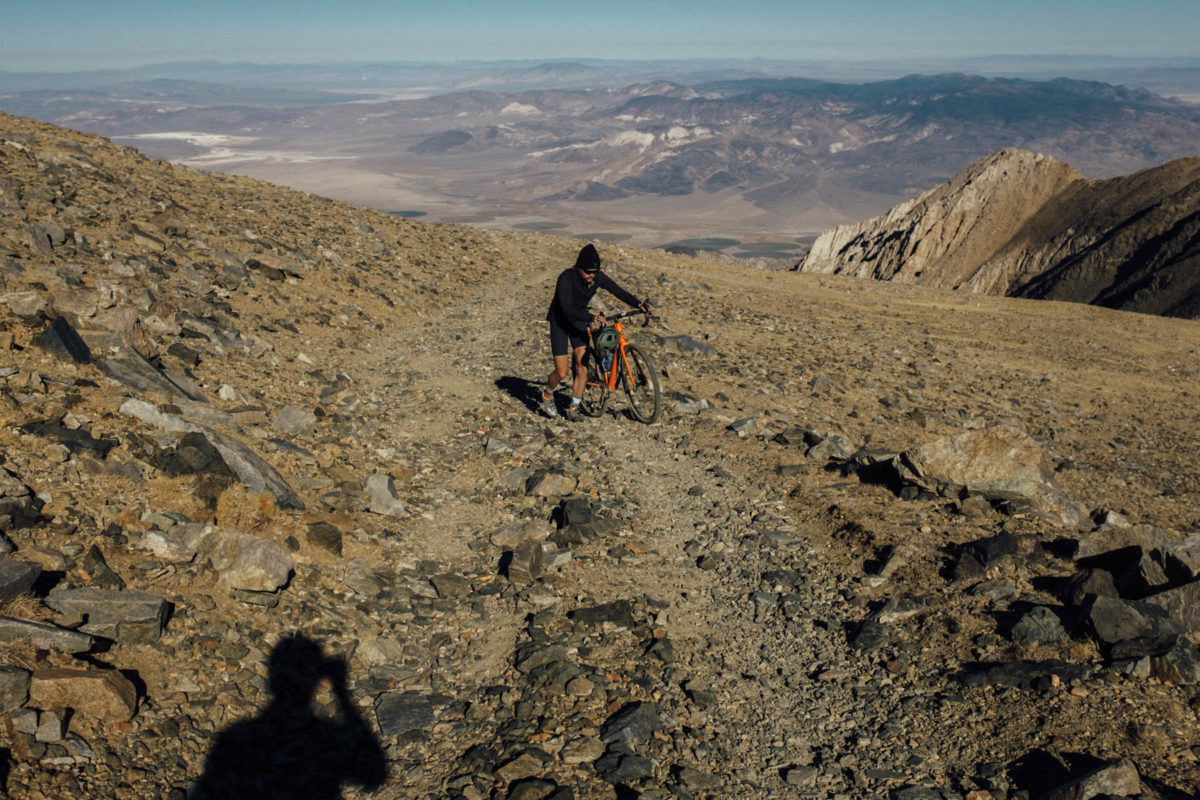
How did you come up with this route?
Eric Brunt had done a summit ride of White Mountain a couple times before. The highest rideable point in California sounded cool, but Eric and I were having beers one night and I sort of challenged him to start at the lowest point, not thinking I would do it. Except, then of course I had to do it. Careful what you say over a beer with your much stronger riding buddy.
What was the most important part of planning the ride?
I wanted to make the route to be the most remote possible on stock road/gravel bikes. The less cars the better on any ride, but especially one where you’ll be out there all night. Making the route remote meant we’d be without a water source after mile 65, so figuring out water supply was the most important factor. I decided caches were the best solution and so the day before the ride we stashed food an water at select points on the route. This let us be lighter and faster, but also, I don’t know what our bikes would have looked like if we carried enough to sustain us for the full ride. I don’t think we should leave our crap out there in the desert so after the ride we collected the caches. There were four total, but only two appear in the film.
By the numbers, this looks like a hard trip. How was it?
Being out on the bike for thirty hours was mystical. We weren’t sure how our bodies would deal with the conditions (temps ranging from 29-99) and timeline. I am no racer, nor do I enjoy sleep deprivation. I saw a lot of things out there, some imagined, some real. I think Jonathan, Eric, and myself, all had our own hallucinatory experiences through the night. Most of the night was spent on Death Valley Rd., a remote part of the ride with no cars passing, or human contact. It was beautiful, lonely, simple, but I had to dig way deep to finish it. Stubbornness and pride got me through it. It was ugly.
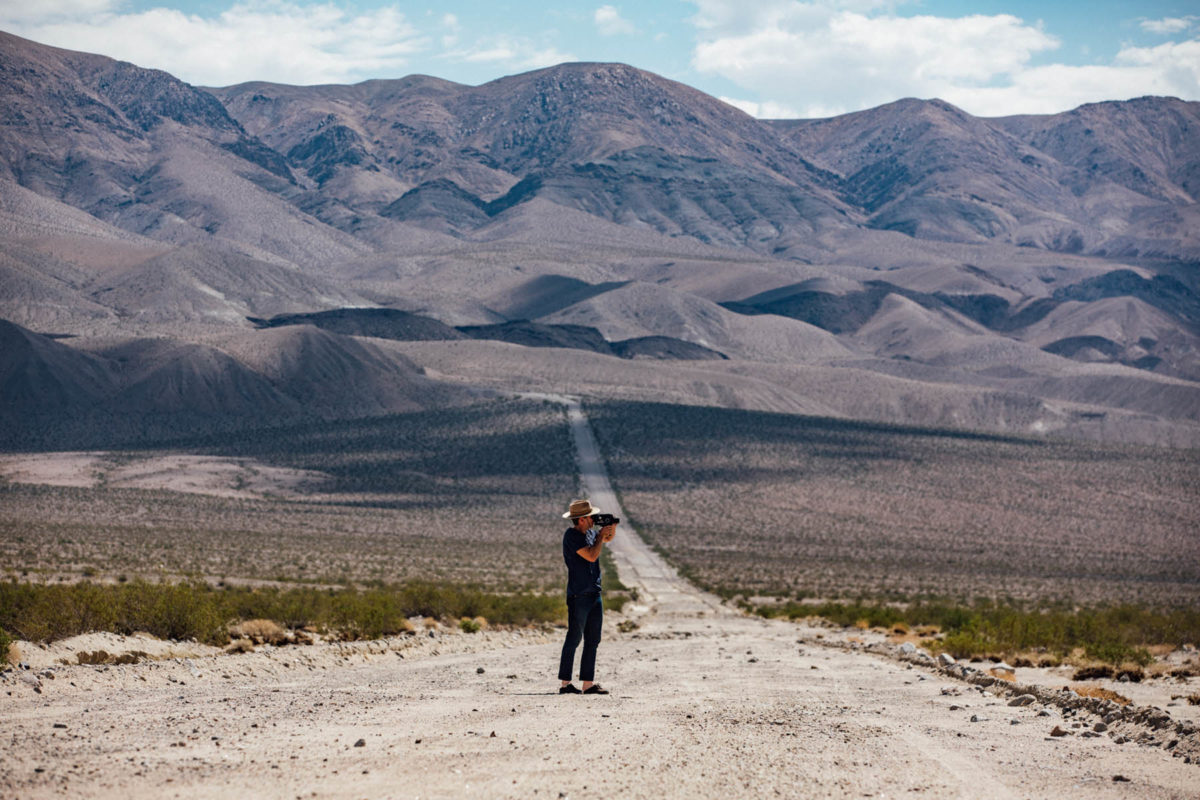
Find more of Brian’s work at his website. Also, make sure to follow him on Instagram @vernor.
Please keep the conversation civil, constructive, and inclusive, or your comment will be removed.






